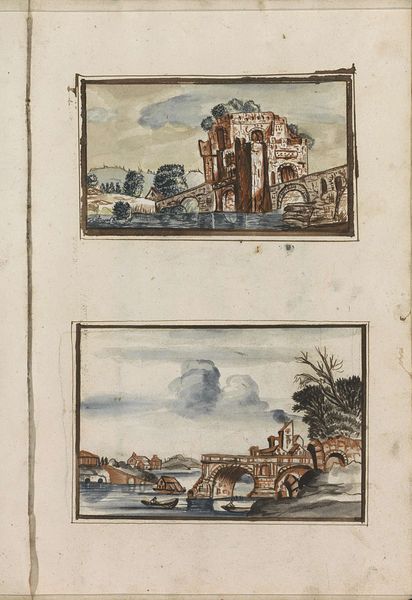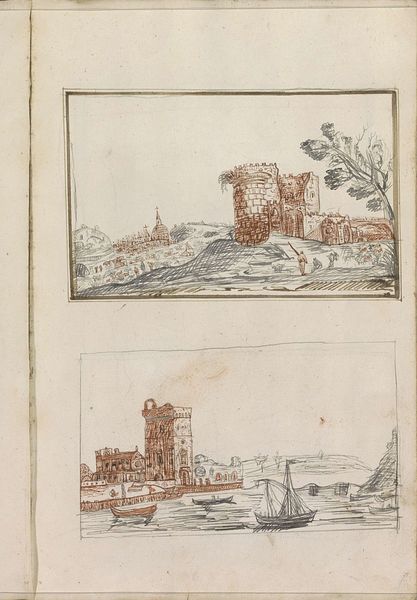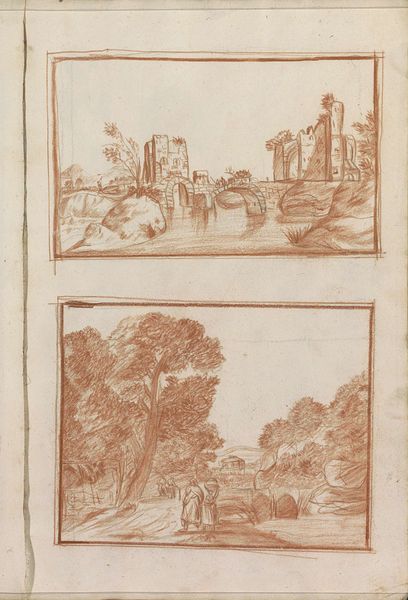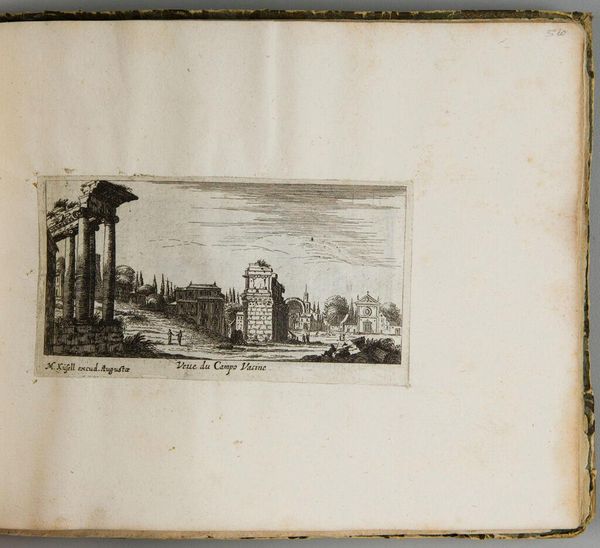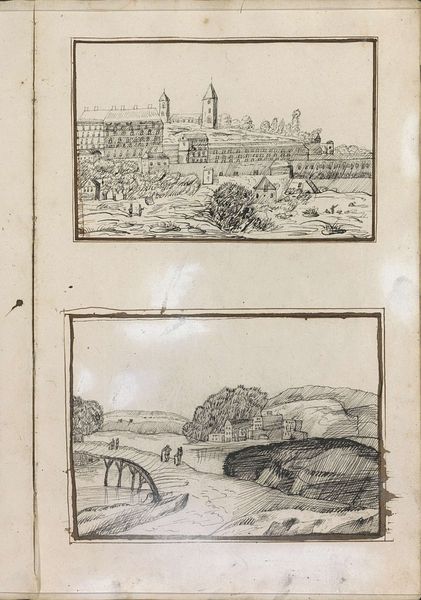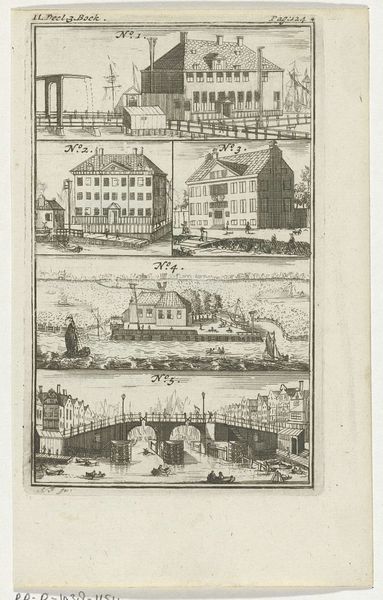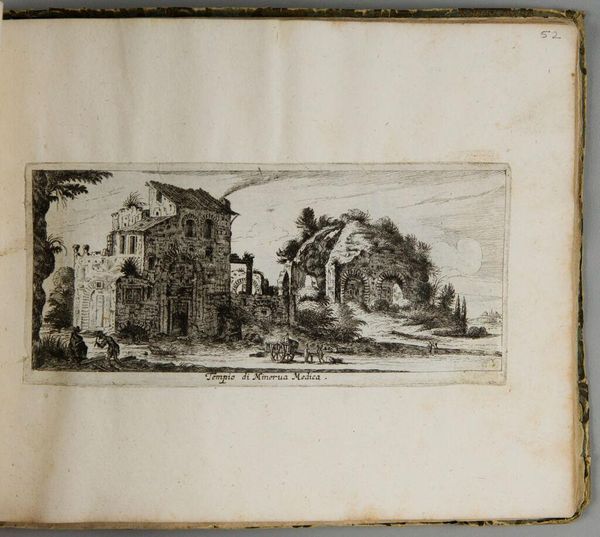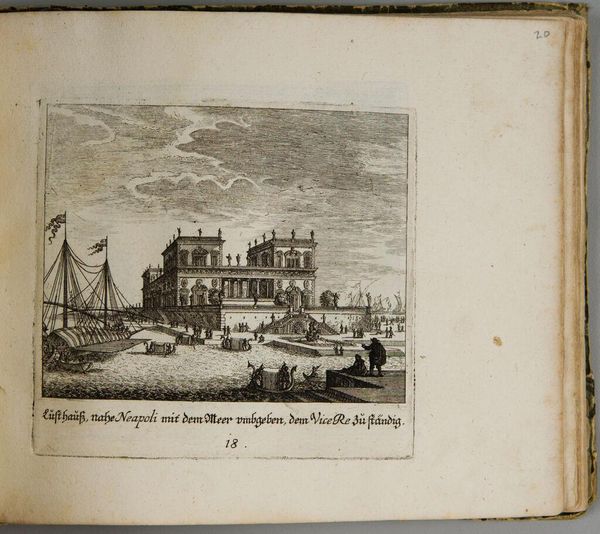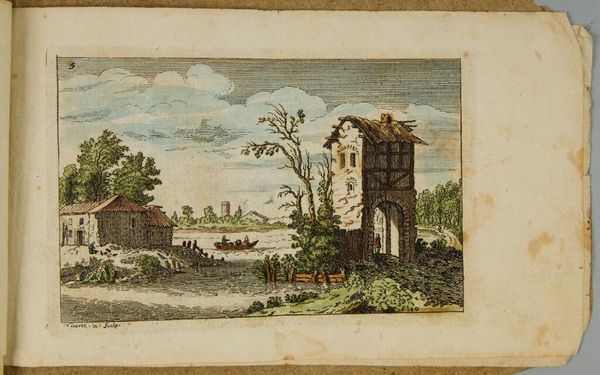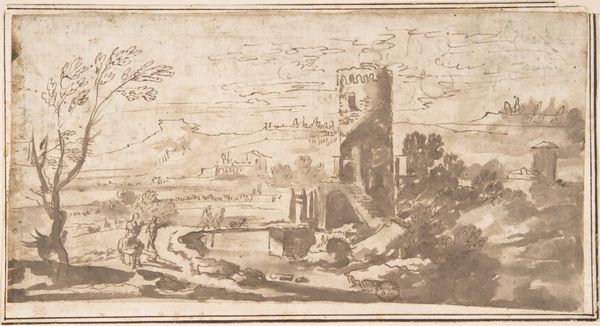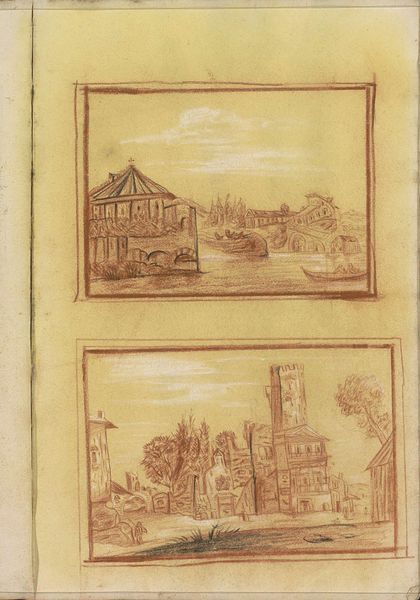
drawing, paper, watercolor, pen
#
drawing
#
dutch-golden-age
#
landscape
#
paper
#
watercolor
#
coloured pencil
#
pen
#
cityscape
#
watercolour illustration
#
watercolor
Copyright: Rijks Museum: Open Domain
Editor: This drawing, "Twee stadsgezichten," or "Two Cityscapes," was created in 1696 by Hendrick van Beaumont, using pen, watercolor, and paper. The two sketches evoke a sense of a crumbling past. What kind of narrative do you think van Beaumont is conveying? Curator: What I immediately notice are these images of the fortified towns. It's almost as if they are emblems. But emblems of what? Consider the architectural style. Notice anything unusual? They are idealized yet decaying, which evokes vanitas traditions in Dutch Golden Age painting—the ephemeral nature of existence. The use of the buildings within cityscapes almost certainly are symbolic, acting as reminders of mortality. What does that tension—grandeur versus ruin—suggest to you? Editor: That tension is quite palpable, especially in the upper cityscape. There’s something deeply evocative about presenting a powerful structure already succumbing to time. So it’s about the temporality, then, but also perhaps about what endures? Curator: Precisely. These symbols persist within the collective memory. Van Beaumont utilizes these visual ruins to trigger a dialogue between past and present. In our contemporary viewing, are these cityscapes not then metaphors for resilience or even cautionary tales, prompting reflections on our own cultural heritage? The buildings depicted within are thus carriers of enduring narratives and values. Editor: That’s such an interesting way of thinking about these landscapes—less as literal places and more as symbols laden with meaning and memory. Thanks for sharing that insight! Curator: My pleasure! And thank you for engaging so thoughtfully with these powerful images.
Comments
No comments
Be the first to comment and join the conversation on the ultimate creative platform.
